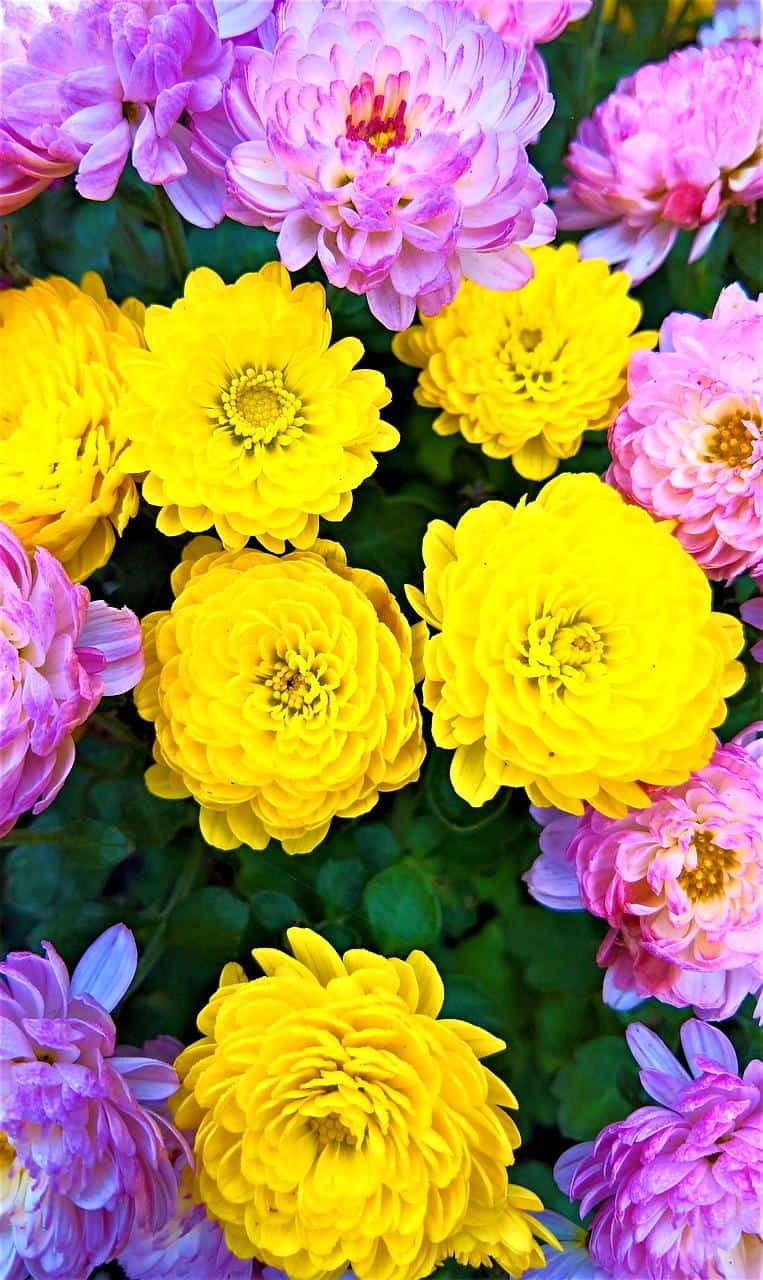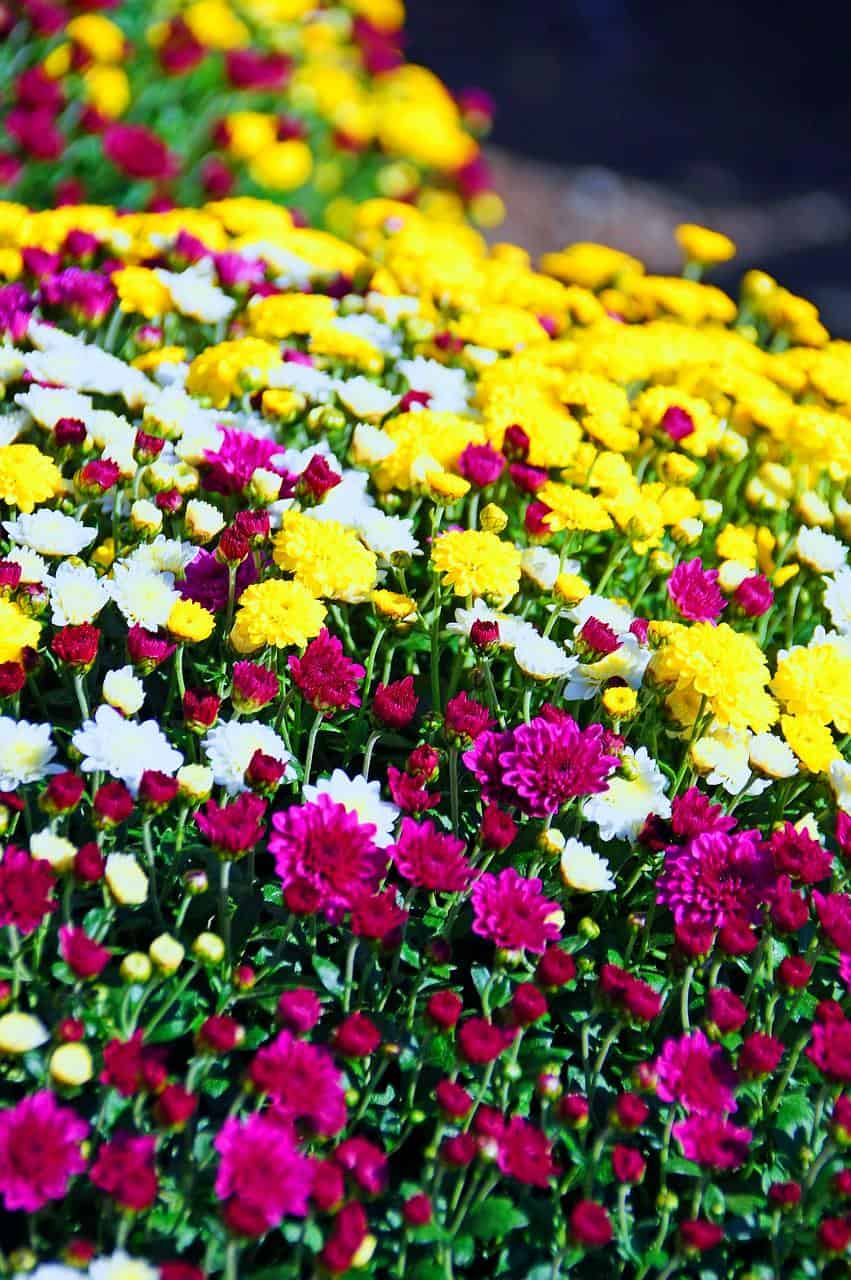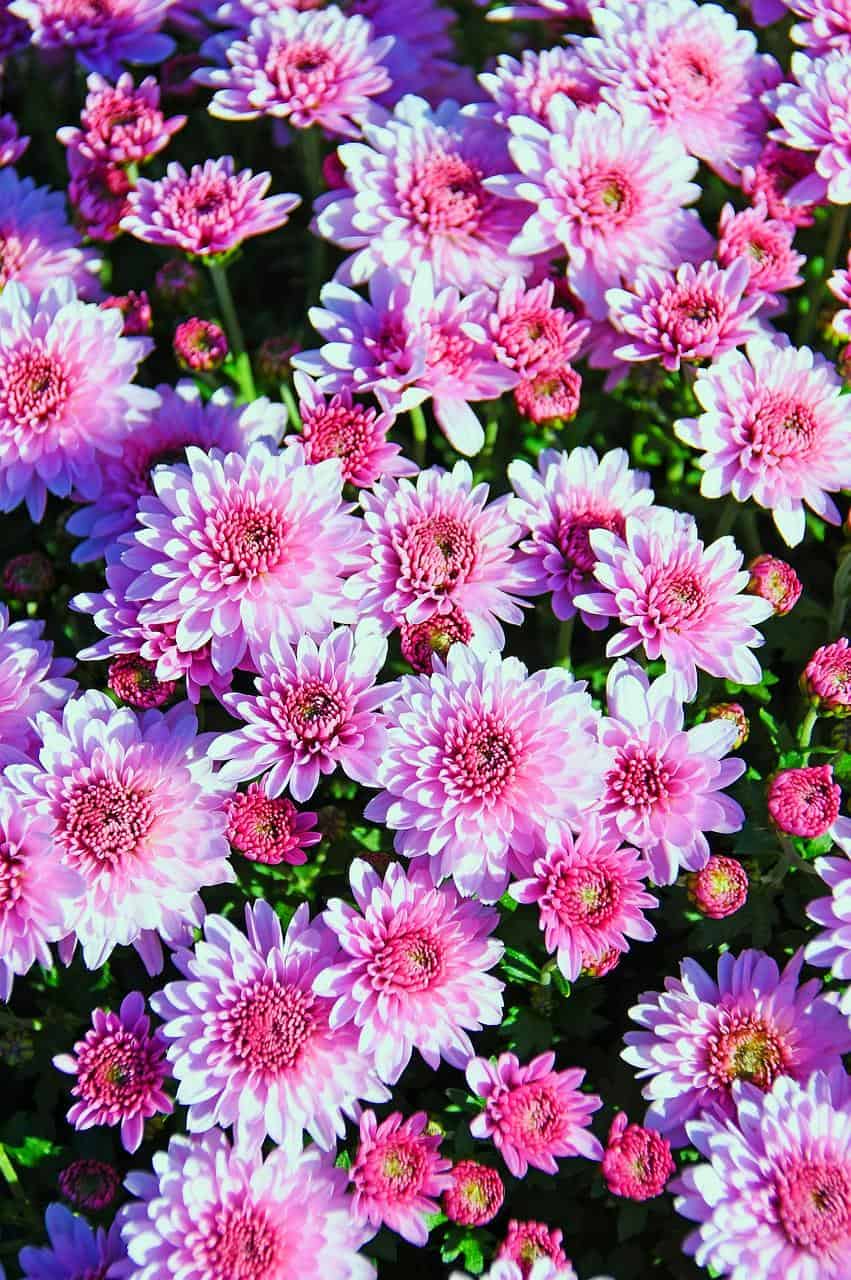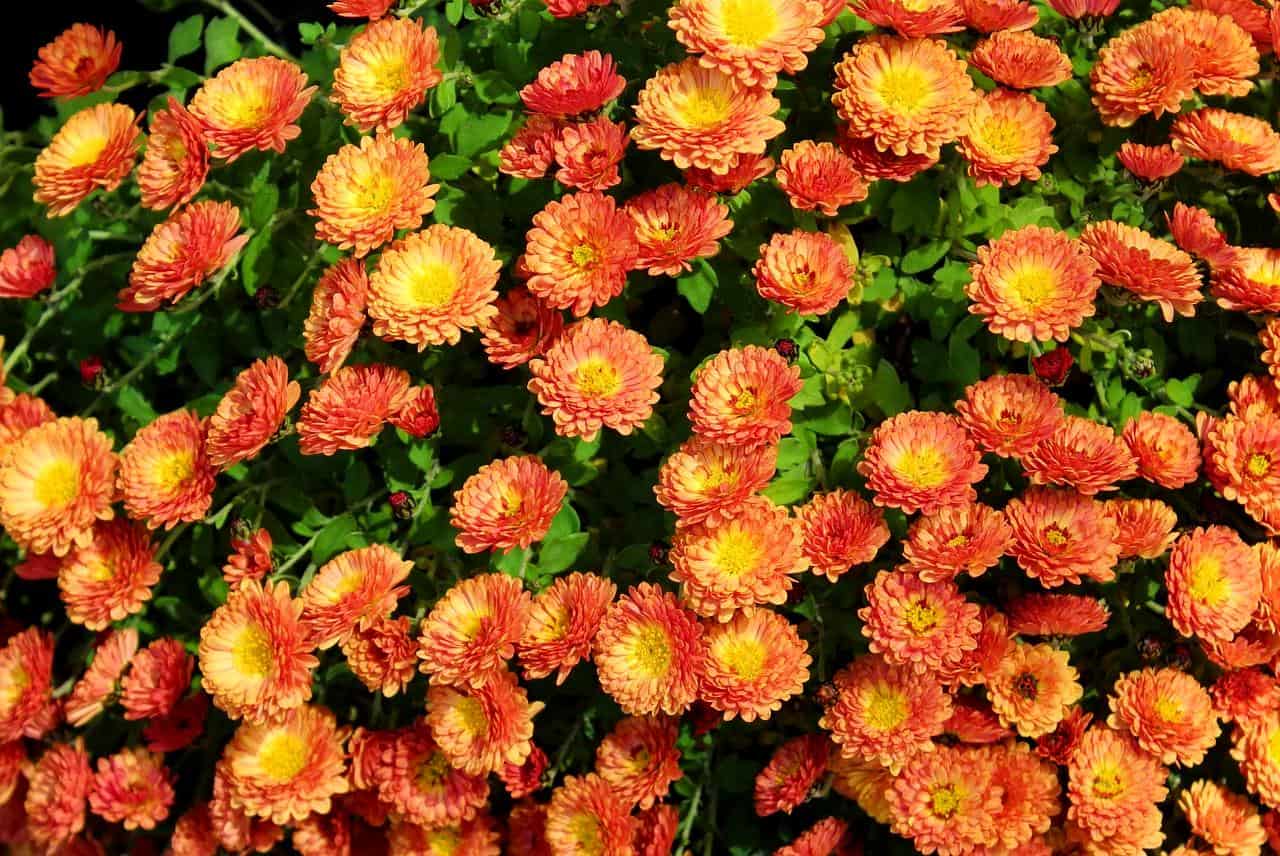As the air turns crisp and the leaves begin to change, gardeners eagerly await the arrival of one of autumn’s most beloved blooms – the chrysanthemum, or “mum” for short. These vibrant flowers come in a dazzling array of colors and can provide a stunning focal point in any fall garden. But to ensure your mums thrive and put on their best show, timing their planting is crucial.
The best time to plant mums is six weeks before the first expected frost in your local area. This planting window allows the mums to become well-established in the soil before the cold weather sets in, giving them the best chance to develop a strong root system and produce an abundance of healthy flowers.
To determine the ideal planting time for your location, you’ll need to know your USDA Hardiness Zone and the typical first frost date range. The table below outlines the recommended planting timeframes for different zones:
| Zone | First Frost | Plant Mums |
5 | October 13-21 | Early September |
6 | October 17-31 | Early to mid-September |
7 | October 29-November 15 | Mid to late September |
8 | November 7-28 | Late September to mid-October |
9 | November 25-December 13 | Mid to late October |
For example, if you live in Zone 7, where the first frost typically occurs between October 29 and November 15, you’ll want to plant your mums in mid to late September, about six weeks before that first frost date.
Planting mums at the right time is crucial for their success. If you plant them too early, they may become leggy and struggle to establish a strong root system before winter. If you plant them too late, they may not have enough time to develop properly before the first frost arrives, leading to a poor display or even plant loss.
By following the guidelines in the table above and planting your mums six weeks before the first expected frost, you’ll give them the best chance to thrive and provide a beautiful autumn display in your garden.
Once your mums are in the ground, be sure to water them regularly and fertilize them with a balanced, slow-release fertilizer. Deadheading spent blooms can also encourage the plants to produce more flowers. With the right care and attention, your mums will reward you with a vibrant, long-lasting show that will be the envy of your neighbors.
Growing Conditions

Mums thrive in well-drained, nutrient-rich soil and full sun exposure. They prefer a slightly acidic soil pH, typically between 6.0 and 6.5. Amending your planting area with compost or other organic matter can help create the ideal growing conditions.
When it comes to watering, mums need consistent moisture, especially during the hot, dry summer months. Be sure to water them regularly, allowing the soil to dry out slightly between waterings. Avoid letting the plants sit in waterlogged soil, as this can lead to root rot and other issues.
Mums are also heavy feeders, so incorporating a balanced, slow-release fertilizer into the soil at planting time, and again in mid-summer, can help ensure they have the necessary nutrients to thrive.
Proper spacing is also crucial for mum success. Plant them 12 to 18 inches apart, depending on the mature size of the variety, to allow for good air circulation and prevent overcrowding.
How to Plant Mums

Once you’ve determined the ideal planting time for your area, it’s time to get those mums in the ground. Start by selecting a sunny location with well-drained soil. Amend the soil with compost or other organic matter to improve drainage and nutrient content.
Dig a hole that is slightly larger than the root ball of your mum plant. Gently remove the plant from its container, being careful not to damage the roots. Place the plant in the hole, making sure the top of the root ball is level with the surrounding soil. Fill in the hole, gently packing the soil around the plant to eliminate any air pockets.
Water the newly planted mum thoroughly, ensuring the soil is evenly moist but not waterlogged. Applying a 2-3 inch layer of mulch around the base of the plant can help retain moisture and suppress weeds.
Mulch

Mulching is an essential step in caring for your mums. A layer of organic mulch, such as shredded bark, wood chips, or leaves, helps insulate the soil and retain moisture. This is especially important during the hot, dry summer months when mums are actively growing and blooming.
The mulch also helps suppress weeds, which can compete with your mums for water and nutrients. Be sure to keep the mulch a few inches away from the base of the plant to prevent rot or disease.
Annual Maintenance

Mums are perennials, meaning they can come back year after year with the proper care. To ensure your mums thrive for seasons to come, follow these annual maintenance tips:
- Deadhead: Remove spent blooms regularly to encourage the plant to produce more flowers.
- Prune: In early spring, cut back the plant by about a third to promote bushy, compact growth.
- Divide: Every 2-3 years, divide the plant’s root clumps in early spring to rejuvenate it and encourage better flowering.
- Fertilize: Apply a balanced, slow-release fertilizer in early spring and again in mid-summer to provide the necessary nutrients for healthy growth.
Frequently Asked Questions
Q: Can I plant mums in the spring?
A: While it is possible to plant mums in the spring, it is generally not recommended. Mums are best planted in the fall, about six weeks before the first expected frost in your area. Planting them in the spring can lead to leggy, weak plants that may not perform as well as those planted in the fall.
Q: How long do mums last?
A: Properly cared for mums can be perennial, meaning they will come back year after year. However, many gardeners treat them as annuals, replanting new mums each fall. With the right growing conditions and maintenance, mums can last for several seasons.
Q: Do mums need full sun?
A: Yes, mums thrive in full sun, which is defined as at least 6 hours of direct sunlight per day. While they can tolerate partial shade, mums will produce the best growth and most abundant blooms when planted in a location that receives full sun exposure.
Q: How often should I water my mums?
A: Mums need consistent moisture, especially during the hot, dry summer months when they are actively growing and blooming. Water your mums regularly, allowing the soil to dry out slightly between waterings. Avoid letting the plants sit in waterlogged soil, as this can lead to root rot and other issues.
Q: Can I transplant mums?
A: Yes, you can transplant mums, but it’s best to do so in the spring or early fall when the plants are not actively blooming. Transplanting during the summer or late fall can be stressful for the plants and may impact their flowering.
Q: How do I overwinter my mums?
A: To overwinter your mums, cut the plants back to about 6 inches tall after the first frost. Apply a 2-3 inch layer of mulch around the base of the plants to insulate the roots. In early spring, remove the mulch and prune the plants back further to encourage new growth.





